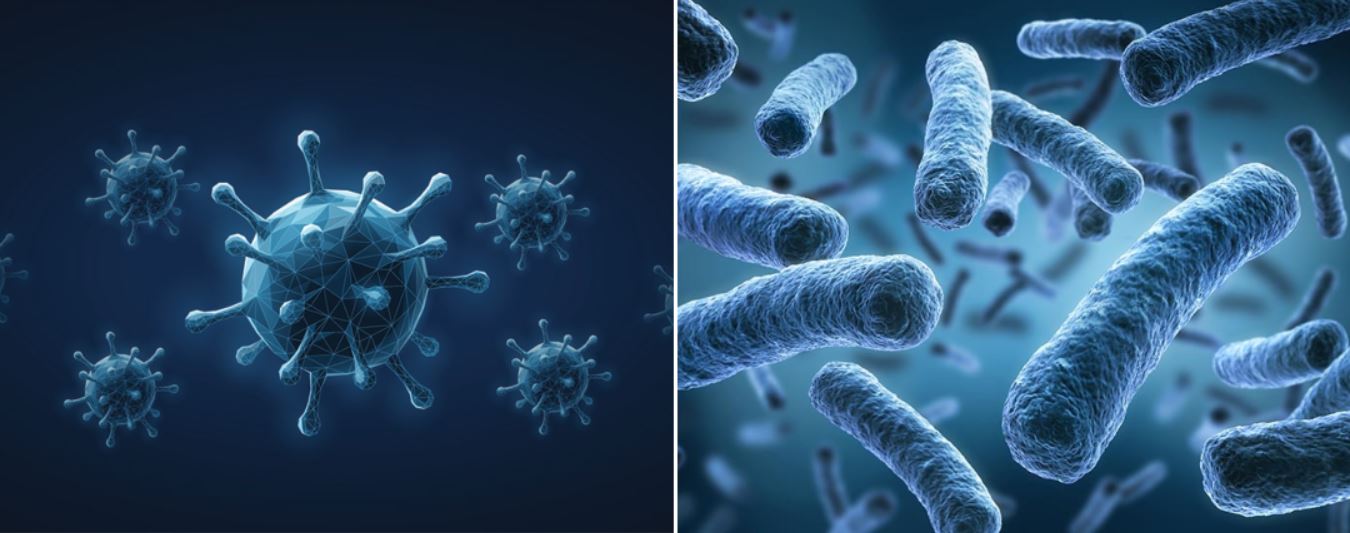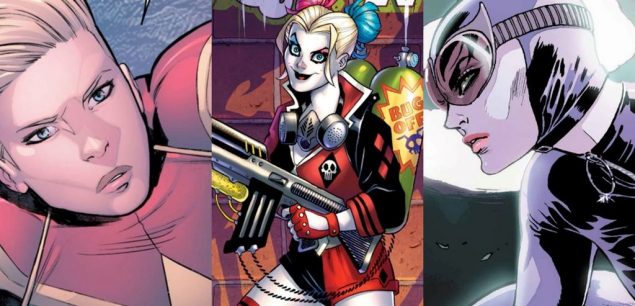Related Resources
Let us guess: You know that viruses and bacteria aren’t the same, but when someone puts you on the spot, you can’t really tell the difference between the two — right?
We’ve all been there!
Sure, you know both viruses and bacteria can make you sick but are these two microbes really that harmful? Is one of them more dangerous than the other?
In this blog post, we’ll highlight the difference between viruses and bacteria and introduce you to the exciting world of microbes.

Bacteria Vs. Virus At A Glance
The key difference between a virus and bacteria is that viruses can’t survive on their own and they need to live inside another organism to survive, while bacteria can make it by themselves and their world won’t crumble if left on their own.
This is just the most obvious difference between these tiny organisms, but the two couldn’t be more different.
In fact, comparing a virus to a bacterium is like comparing a butterfly to a polar bear.
Bacteria are far more complex than viruses. Since they can survive without anyone else’s help, they’re considered to be living organisms. They’re also usually harmless — in fact, just 1% of bacteria can make you sick!
Another significant difference between a virus and bacteria is their size — most viruses are smaller than the smallest bacteria! This is particularly interesting considering that most viruses cause diseases and hurt their host.
Now, let’s explore in greater detail what viruses and bacteria are to understand their dissimilarities better.

What Is A Virus?
A virus is a microbe — a tiny menace notorious for the harm it can cause to its host.
Most viruses range in size from 20 to 400 nanometers, although some of them, such as the Ebola virus, can extend their diameter from 80 to 1000 nm!
To understand how small a nanometer is, imagine this: a single strand of human hair is around 80,000 to 100,000 nanometers wide! Viruses are so small that it’s impossible to spot them with the naked eye!
However, despite their minute build, viruses surely do pack a punch. And there are so many of them!
Scientists say there are 10 nonillion viruses on Earth — that is one followed by 31 zeroes! Even though the number of viruses is staggering, there are even more bacteria on our planet. We’ll discuss this soon!
We mentioned that, unlike bacteria, viruses are not considered “alive”.
They can’t replicate on their own, and they need a living organism to do the job for them. This is arguably the most significant difference between a virus and bacteria!
Anyone can host a virus — you, an animal, a plant, even bacteria! — and so anyone can help it reproduce.
Viruses are obviously not too picky when choosing a place to live. What matters to them is that their host is alive, so they can try to hijack its cells and use the cells’ proteins to grow in numbers.
After all, the only goal viruses have is to make more viruses!
Now, have you ever wondered what viruses are made of?
What Does A Virus Consist Of?
Every virus contains:
- a DNA or RNA (never both)
- a protective protein shell called capsid that safeguards the genetic material
The viruses that contain only the genetic material and the capsid are called non-enveloped viruses. For instance, a Rhinovirus that causes the common cold is a non-enveloped virus:
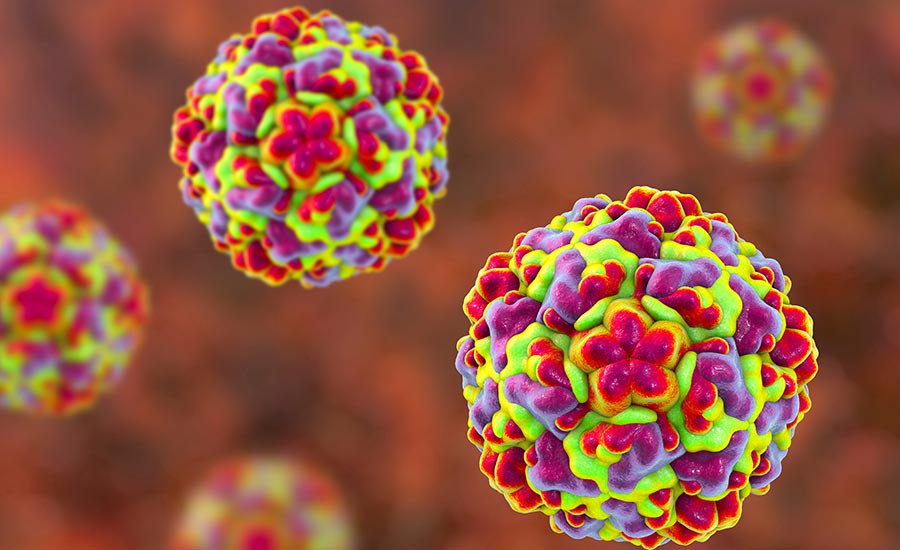
On the other hand, some viruses contain a lipid envelope around the capsid. The envelope further protects the DNA or RNA, but it also helps keep a virus under the immune system’s radar.
Think of the envelope as some sort of a ghillie suit that helps viruses pass for the host’s cells!
For example, the influenza virus and the SARS-CoV-2 coronavirus are both enveloped viruses.
The viruses get the lipid envelope from the host.
And how does that happen?
During the process of the so-called “budding,” a virus exits the cell it has previously used to replicate. Since it no longer needs that particular cell’s mechanisms, it wants to leave it. On its way out, a virus pierces the cell’s membranes, which leaves it wrapped in a lipid envelope.
During budding, a virus may also acquire glycoproteins, i.e. molecules that contain carbohydrates (sugar molecules) and a protein.
Glycoproteins are important for you because they participate in your body’s immune response, and they also allow your B-Cells to travel through your body. Moreover, your blood type depends on which glycoproteins your red blood cells contain.
Viruses that have a lipid membrane and glycoproteins on it are usually illustrated with spikes and knobs. For instance, the SARS-Cov-2 coronavirus looks like this:
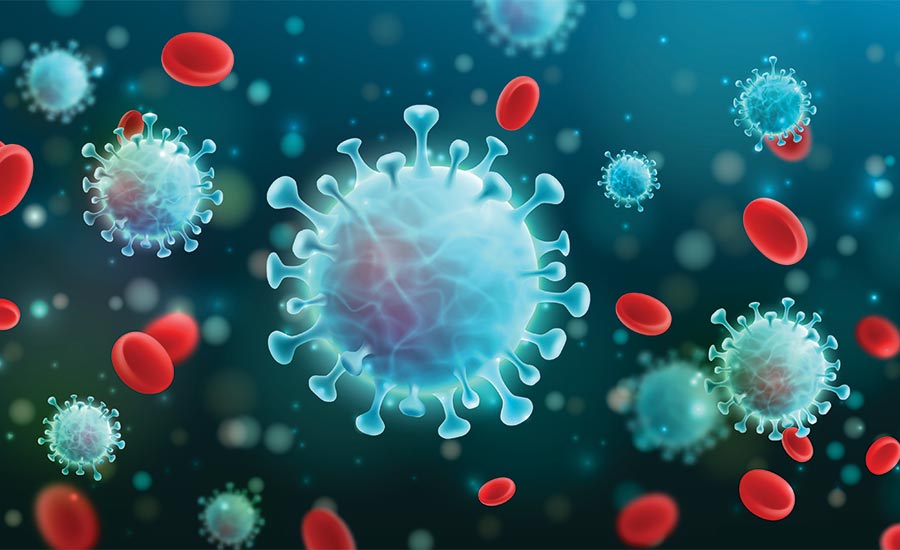
Compare the surface of an enveloped virus with that of non-enveloped menaces — the latter certainly look bland without the membrane and the “accessories” made out of glycoproteins.
When a virus ends up with glycoproteins on its surface, it uses them to interact with its surroundings.
Viral glycoproteins scan the viral receptors every cell in your body has, and, when they recognize the appropriate host, they bind with it. And that’s when a virus can start infecting a cell!
A virus only wants to infect a cell to use it to reproduce! But we’ll talk about viral reproduction in a bit!
How Are Viruses Destroyed?
Now, no matter how tough and protected viruses tucked into a lipid membrane may seem, you can easily destroy most of them while they’re still on the skin’s surface.
Can you guess how?
With water and soap! Even alcoholic hand sanitizers with at least 60% alcohol work like a charm against enveloped viruses.
On the other hand, viruses without the lipid envelope are harder to destroy and more resistant to disinfectants. To defeat them, your body’s lymphocytes, macrophages and neutrophils may need antivirals as allies to win the battle!
The immune system is crucial for fighting viral infections, but medical treatments can also help.
Antiviral medications are specifically designed to stop viruses from replicating, which can lessen the severity and duration of illnesses.
How Do Viruses Reproduce?
Viruses grow in numbers either through the lytic or lysogenic cycle.
The lytic cycle happens when a virus enters a cell and uses its metabolism to create new proteins and nucleic acids. A virus then creates new cells, eventually causing the host cell to burst, i.e. lyse. The newly-created viruses continue their journey and look for other host cells to continue their mission of growing in numbers.
The lysogenic cycle, on the other hand, occurs when the viral genetic material integrates with the host’s DNA. So, when the host cells replicate, the viral DNA tags along. As a result, the host’s daughter cells are infected with the virus.
What Are Bacteria?
Bacteria are also microbes with a bad reputation, but unlike viruses, they don’t really deserve theirs.
As we mentioned earlier, only a small percentage of bacteria can hurt you.
So, what’s the deal with the rest of the bacteria?
Well, about 99% of bacteria are the good guys that make our lives a lot easier.
Bacteria help you do many things, like digest food, absorb nutrients, and get rid of harmful cells, but also kill off other microbes while fighting for resources within your body.
Did you know that bacteria also make your life taste better? When you add them to milk, they help turn it into yogurt!
These simple organisms make up the majority of your body. How crazy is that?!
Your body contains around 30 to 40 trillion cells, but it also contains just as many bacteria and then some!
Although some experts say that the ratio of bacteria to cells is 10:1, the more recent research shows that it’s likely smaller — around 1:1.
Bacteria are everywhere, and you can find them just about everywhere on our planet. According to research, there are five million trillion trillion bacteria on Earth — that’s a five followed by 30 zeroes!
Bacteria come in many sizes and shapes. For example, an average rod-shaped bacterium has a diameter of approximately 0.25 to 1.00 micrometers, whereas the diameter of a spherical bacterium ranges between 0.5 – 2 micrometers.
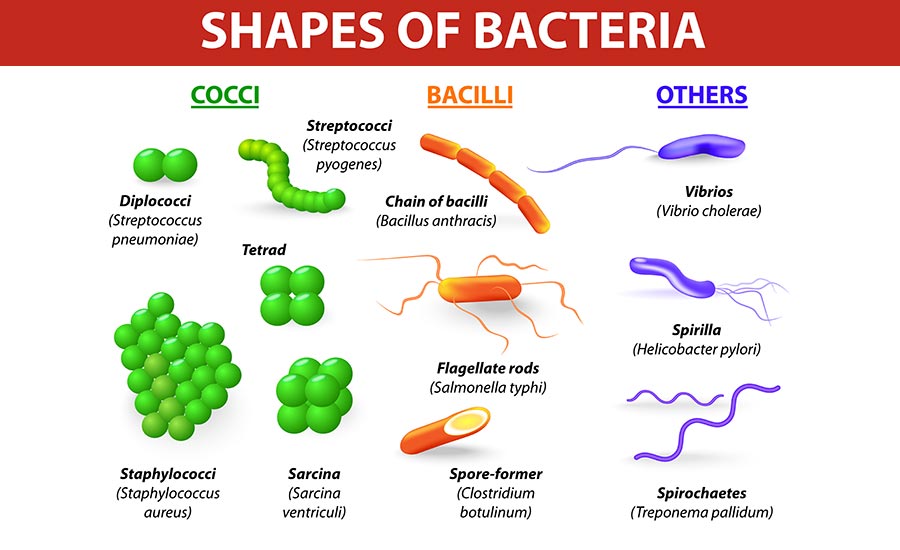
One micrometer has 1,000 nanometers, so it’s clear that, compared to viruses, bacteria seem gigantic! However, they’re still way smaller than an average hair strand which is approximately 80,000 to 100,000 nanometers wide!
What Do Bacteria Consist Of?
Bacteria are single-cell microbes that can lead their life on their own, unlike viruses. That’s why we say that bacteria are “living” organisms.
This single cell within a bacterium contains DNA.
But the double-stranded bacterial DNA isn’t placed in the nucleus like yours is. Bacteria don’t even have a nucleus! Instead, their genetic information is packed within the nucleoid — an irregularly-shaped area without a membrane.
Since bacteria are autonomous, they don’t have to hijack your cells to carry out life processes for them. They are capable of doing everything on their own.
Bacteria can transform DNA into RNA by themselves, and this is a huge difference between virus and bacteria. This process is essential for their survival because it helps them make proteins, which then allow them to adapt to specific conditions in their environment.
For example, certain bacterial proteins help them develop flagella, i.e. rigid tails that bacteria use to move around.
Some bacteria also contain pili, i.e. the hair-like structures on bacteria’s surface that enable them to infect someone with ease by enabling contact between bacteria and the target. Moreover, pili allow for the transfer of the genetic material between bacterial cells.
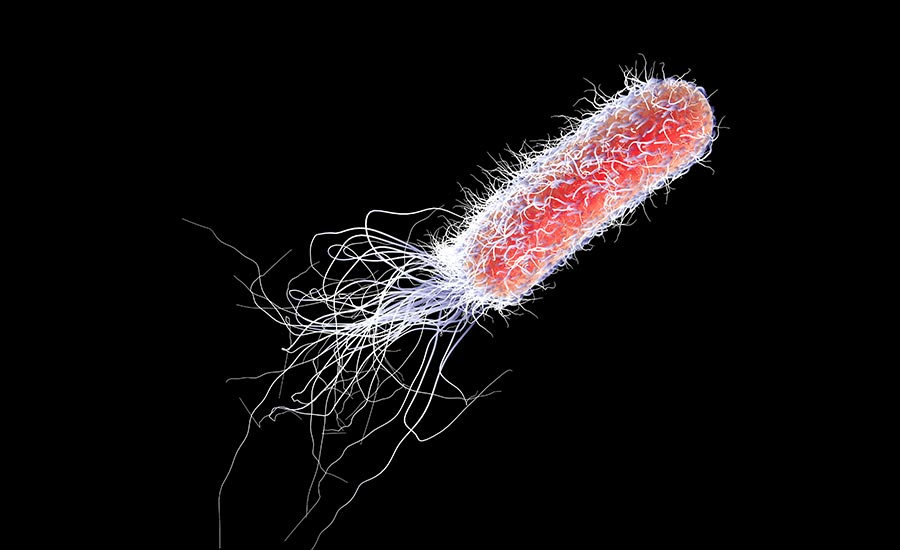
Now’s a great time to talk about bacteria reproduction!
How Do Bacteria Reproduce?
We just mentioned that bacteria use pili to transfer DNA from one bacterium to another. This process is called bacterial conjugation and it represents one of the ways bacteria reproduce.
Another way in which bacteria usually reproduce is called binary fission. This process is similar to mitosis in humans and other eukaryotes, i.e. organisms that have a nucleus and organelle within the cell membrane. It allows for rapid population growth under favorable conditions.
Binary fission is not the same as mitosis because bacteria and all prokaryotes don’t have a nucleus.
During binary fission, a parent bacteria cell first replicates its DNA so there are two nucleoids. Then, the cytoplasm within the cell splits and the two identical daughter cells are free to lead individual lives.
Bacteria can exchange genetic material through several processes, which enhance their genetic diversity and adaptability.
Conjugation is the direct transfer of DNA between two bacterial cells via a structure called a pilus.
Transformation refers to the uptake of free DNA from the surrounding environment.
Lastly, transduction involves the transfer of DNA that is mediated by bacteriophages, which are viruses that infect bacteria.
How Are Bacteria Destroyed?
On dead surfaces or in food, you can destroy bacteria with hot water!
Water of at least 140°F and more can kill bacteria in the water itself, but also annihilate bacteria in food, on surfaces and cooking utensils.
To clean pools, people use chlorine. You probably caught a whiff of it at some point if you went swimming in a pool. Chlorine has a strong smell, similar to bleach. Both are toxic and only adults should use them.
In case you catch a bacterial infection, there are many antibacterial medicines that destroy bacteria and prevent them from growing in numbers.
And to ensure wounds stay clean and bacteria-free, most people use iodine or hydrogen peroxide.

Common Diseases Caused By Viruses And Bacteria
Viruses and bacteria cause a variety of common diseases, some more serious than others, affecting millions globally.
Understanding the illnesses caused by viruses and bacteria can help you in recognizing and treating infections effectively.
Viral Infections
Some of the most common viral infections include:
- Influenza (Flu): This is a contagious respiratory illness caused by influenza viruses. It results in symptoms such as fever, cough and body aches.
- Common Cold: This viral infection is primarily caused by rhinoviruses. These tiny germs make your nose runny and your throat feel sore and scratchy.
Bacterial Infections
The most common bacterial infections include:
- Strep Throat: A type of germ called Streptococcus pyogenes can make your throat really sore and give you a fever.
- Tuberculosis: Mycobacterium tuberculosis is a germ that can make it hard to breathe because it causes a serious infection in the lungs.
- Urinary Tract Infections (UTIs): Tiny germs like Escherichia coli can make it hurt when you pee and cause a stomach ache.
Recognizing whether an illness is viral or bacterial is crucial, as it determines the appropriate treatment method.
For instance, iIt’s important to note that antibiotics are ineffective against viruses, as they target bacterial structures and functions not present in viruses.
Misusing antibiotics for viral infections can contribute to antibiotic resistance, which is a significant public health concern.
Recap On The Difference Between Virus And Bacteria
Whether we’re discussing the size, structure, or reproduction of the two microbes, it’s clear that the difference between a virus and bacteria is huge!
From the way they look and reproduce to what they consist of and how you destroy them, viruses and bacteria are nothing alike.
Viruses are non-living microbes that make use of the host cells to grow in numbers. They cause harm to their host, but they don’t care — all that matters for them is that they replicate.
On the other hand, bacteria can be both the good and the bad guys. They are independent and need no one to reproduce — they can do it all on their own.
Unlike viruses that use their host for personal gain, bacteria are essential for your well-being and they selflessly do a lot to make your life easier.
True, some of them can be dangerous to your health, such as Salmonellla and Escherichia coli, because they can contaminate food and cause you to get food poisoning.
But don’t forget — not even 1% of bacteria is harmful to humans!
Difference Between Viruses And Bacteria FAQs
Viruses are non-living particles that require a host cell to reproduce, while bacteria are living microorganisms that can survive and multiply on their own. Viruses invade host cells and hijack their machinery to replicate, whereas bacteria can independently grow and divide through binary fission.
Bacteria cause disease by releasing toxins or by directly invading tissues. Viruses, on the other hand, cause disease by damaging or destroying host cells during their replication process. While some bacteria are beneficial, such as those found in the gut flora, all viruses are potentially harmful because they must infect cells to survive.
Antibiotics are effective against bacterial infections but do not work against viruses. Antiviral medications target viral replication, but they are specific to certain viruses. Misusing antibiotics for viral infections can lead to antibiotic resistance.
Bacteria are larger, have cell walls and contain DNA, ribosomes and cytoplasm. Viruses are smaller, consist of genetic material (DNA or RNA) enclosed in a protein coat and lack cellular structures like ribosomes and cytoplasm.
Bacteria reproduce through binary fission — a process where one cell splits into two. Viruses cannot reproduce independently — they must infect a host cell and use it to create new virus particles.
Both viruses and bacteria can pose dangers depending on the strain and circumstances. Viruses such as HIV or Ebola can be highly lethal, while bacterial infections like tuberculosis and MRSA can also be severe. The severity varies based on the pathogen and the availability of treatment.
Bacterial infections are diagnosed using cultures, blood tests or imaging. Viral infections are often identified by symptoms, antigen tests or PCR tests. Lab tests can differentiate between viral and bacterial causes of illness.

